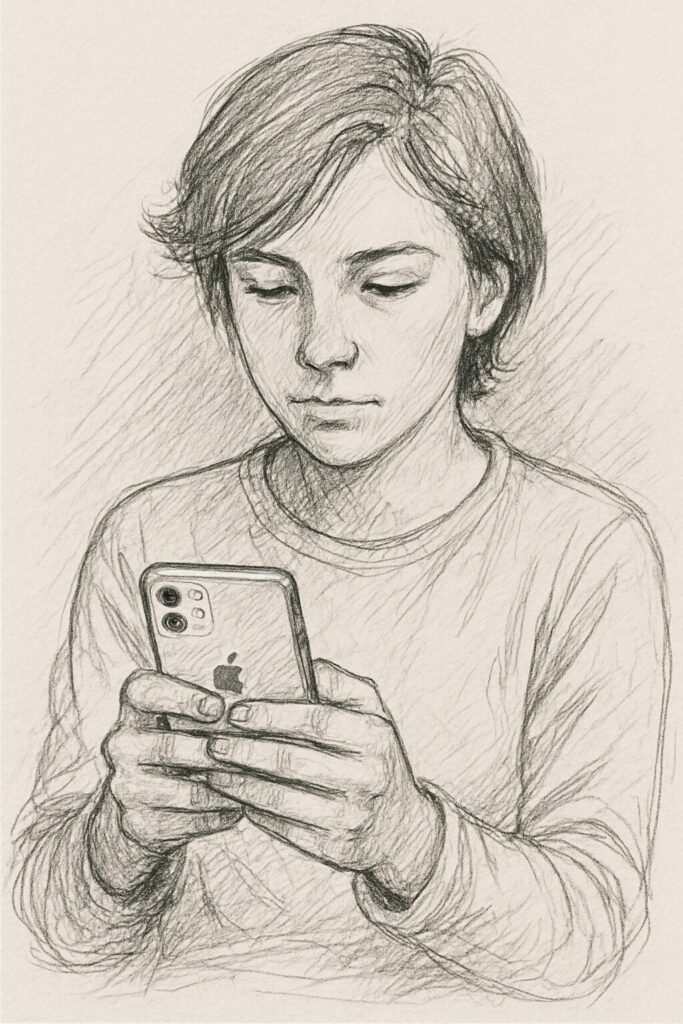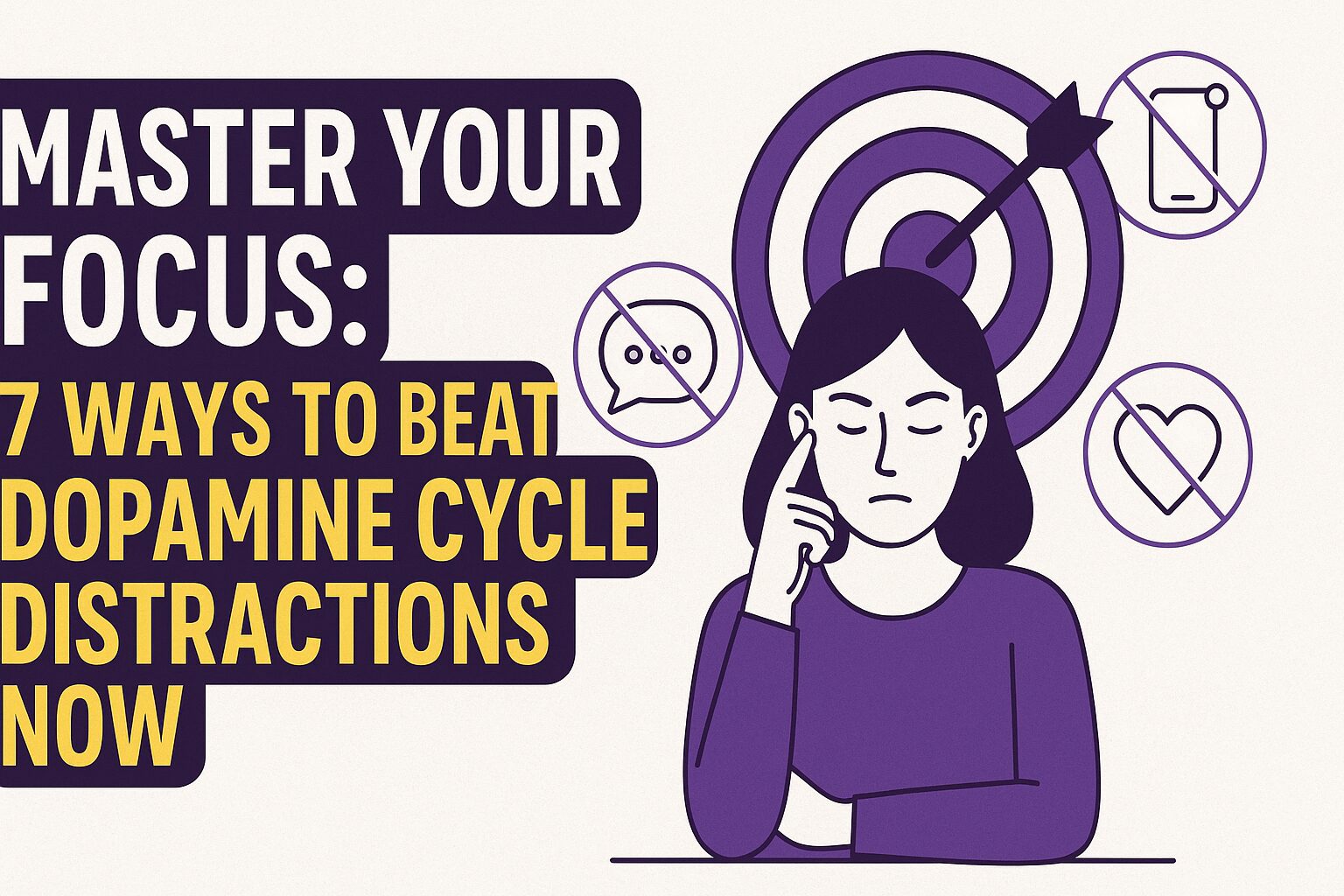In today’s hyper-connected world, we have become unwitting actors in a neurochemical loop that has us bound to our devices. The constant notifications, endless scrolling, and continuous connectivity have made our relationship with technology something akin to addiction.
At the center of this process is dopamine, a potent neurotransmitter that propels our digital habits in ways we may not even be aware of. Understanding these dopamine cycle distractions is the first step to liberation.

The Neuroscience Behind Digital Dependence
As opposed to popular notion, dopamine is not just a “pleasure chemical.” Rather, it’s a more insidious part of our brain reward system in terms of wanting and expecting rather than pleasure.
In our virtual life, dopamine is the fuel behind our compulsive checking of notifications, endless scrolling of social media streams, and constant seeking out of new experiences online. Each like, share, or notification releases a small amount of dopamine, creating a feedback loop that keeps us coming back for more.
It was originally intended as a system to reinforce survival behaviors, but now, in our virtual world, it has been hijacked by the constant flow of stimuli provided by our devices.
Dopamine Desensitization
Repeated stimulation of our reward circuits makes us risk dopamine desensitization. With our exposure to high levels of stimulation, we require stronger or more frequent digital experiences to enjoy the same high. We get caught up in a self‑reinforcing cycle of mounting use and declining returns, deepening the dopamine cycle distractions.
Smartphones: The Digital Needle in Our Pockets
Just as the invention of the hypodermic needle revolutionized drug administration, the smartphone has become the delivery mechanism for our digital dopamine fix. With vibrant screens, engaging notifications, and endless apps, smartphones provide a constant source of potential reward and stimulation.
The parallels between smartphone use and substance addiction are striking:
- Both provide quick, easily accessible hits of dopamine.
- Both can lead to compulsive use patterns that interfere with daily life.
- Portability makes it particularly devious, as it’s always readily available.
Breaking Free Without Apps: 7 Practical Strategies
Ironically, most of the solutions to digital addiction take the form of yet more apps. But true freedom from digital distraction often requires more fundamental shifts in our relationship with technology. Here are practical strategies that don’t require more software:
1. Create Physical Distance
The greatest way of reducing distraction is to actually remove devices from your immediate space. Think:
- Creating tech‑free zones in your house, particularly your bedroom
- Leaving your phone in another room during work hours
- Creating physical barriers between yourself and devices for set periods
2. Implement Digital Detox Days
Spend time once a week completely away from digital devices. Consistent practice reconditions your sensitivity to dopamine and reduces dependence on digital stimulation.
Start with shorter periods if a whole day seems impossible. Gradually extend the time as you become more comfortable with disconnection. (Explore more mindfulness techniques on our Wellbeing Hub.
3. Practice Mindful Usage
Before you head off for your device, pause and think about why you’re doing this. Is it from necessity or habitual need? Awareness interrupts automatic habits and puts you in charge of your technology use rather than the other way around.
4. Notice the Psychology at Work
Behind social media apps are extremely clever designers trying to get you to spend as much time as possible on their sites. Apps with “like” buttons take advantage of variable reinforcement—the fact that our brains release more dopamine when rewards are unpredictable.
Knowing these mechanisms can help you avoid their grasp. Understanding the persuasive design techniques used can be quite empowering.
5. Develop High‑Quality Leisure
Use the time freed from dopamine cycle distractions to engage in high‑quality leisure activities. Learn something new, go for a walk, or get involved with a cause that you feel strongly about.
These activities not only provide healthier sources of dopamine but also contribute to overall well‑being and life satisfaction.
6. Appreciate Silence and Solitude
Compulsive use of the telephone is a product of an imbalance between the brain’s “liking” and “wanting” circuits. Silence serves to rebalance the circuits, so there is less compulsive activity.
Similarly, solitude with your own mind—freedom from the influence of other minds—opens up great opportunities for thought that constant connection typically annihilates.
7. Challenge the “Always On” Mentality
Challenge the premise that you need your phone constantly. Try leaving it home or in your glove box in your car when you head out to run errands. Take walks without a phone or stash it away in a backpack.
Keeping your phone out of sight can be highly effective at preventing reflexive checking.
Reclaiming Your Attention and Time
As we navigate our increasingly digital existence, let’s not lose sight of the fact that technology is there to serve us, not the other way around. By understanding the dopamine cycle distractions that drive our digital behaviors and employing wise strategies to break free from its grasp, we can establish a healthier dynamic with our devices.
It is not the intention to eliminate technology but to employ it knowingly and intentionally. When we take control of our digital consumption rather than letting it control us, we find space for the things that truly matter—broad work, deep relationships, and the sort of unwavering attention that yields our most rewarding accomplishments.
Remember, as computer science author Cal Newport pointed out, “Humans are not wired to be constantly wired.” By digital minimalism, we allow our phones to work for us, not against us, in living our best life.
We all have only one life. Let’s not waste it on an unrestrained passion for our screens.




1 thought on “Master Your Focus: 7 Ways to Beat Dopamine Cycle Distractions Now”